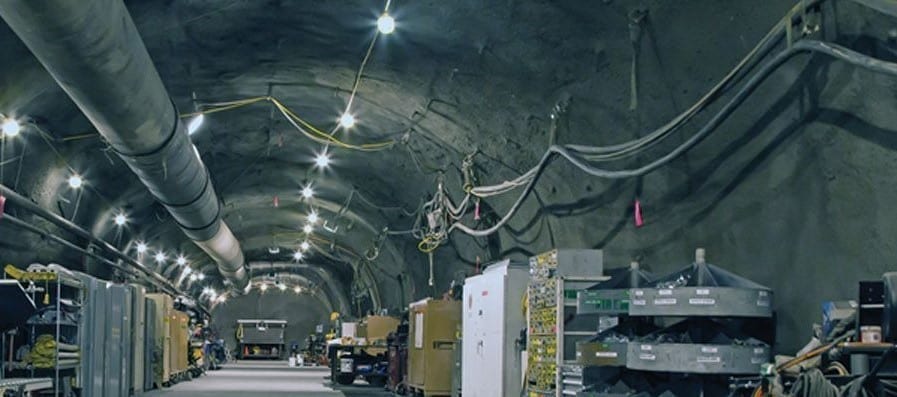
ALEXANDRIA, VA — Upgrades to a nuclear-weapon test facility in Nevada are falling further behind schedule, government officials and weapon-site managers said here Wednesday.
Officially called Enhanced Capability for Subcritical Experiments (ECSE), the upgrades involve expanding the Nevada National Security Site’s U1a underground complex and installing a sophisticated new x-ray camera to measure explosive plutonium tests.
The expansion has slipped about a year since the Department of Energy’s National Nuclear Security Administration (NNSA) set the schedule last summer and the equipment could be three years behind or more, owing in part to the materials shortages that began during the COVID-19 pandemic.
The Los Alamos National Laboratory was hoping for the full suite of upgrades and installations to be finished before it has to design the W93 intercontinental ballistic missile warhead for the Navy. The first copy of the weapon is notionally due in the mid-2030s, the NNSA says.
ECSE “opens up spaces for how we would design something like the W93,” Robert Webster, deputy director for weapons at Los Alamos, said at the Exchange Monitor’s annual Nuclear Deterrence Summit. “But if you don’t get it, you can take some very important options off the table,” potentially requiring “a change in [the] military characteristics” of the warhead.
Last year at this time, the NNSA said in its annual budget request that subcritical experiments with the new Scorpius x-ray imager at the expanded U1a complex could start in fiscal year 2027, which begins Oct. 1, 2026.
But on Wednesday at the summit, Webster told the Monitor that materials shortages have contributed to “massive uncertainties” for Scorpius, which now might not arrive until 2030. Around this time last year, in its annual budget request, the NNSA thought Scorpius might be ready in the summer of 2027.
Meanwhile, the underground expansion of U1a will not be done until November 2027, Garrett Harencak, president and CEO of Nevada test-site prime contractor Mission Support and Test Services, told the Monitor here Wednesday.
That’s about a year later than the date the NNSA last summer set for the expansion, which is officially known as the U1a Complex Enhancement Project 20 subproject. The work involves mining out new underground tunnels, furnishing the space and wiring it to accept the Scorpius imager being developed by Los Alamos as part of the Advanced Sources and Detectors project.
Though W93 will be based on a nuclear-explosive package tested at full yield before the U.S. instituted a test moratorium in 1992, it will be the first clean-sheet warhead design since the end of the Cold War, around that time. Los Alamos will be responsible for the warhead’s design and the Navy will be responsible for the weapon’s Mark 7 aeroshell.
If necessary, the Washington-based head of the NNSA’s nuclear weapons programs said here Wednesday, W93’s designers will make do without their hoped-for, next-generation test facility.
“The truth is that our scientists and engineers who are doing these assessments and who have to certify designs are going to do the best they can with the tools they have,” Marvin Adams, deputy administrator for defense programs said at the summit. “And they’ll have to be more conservative if they don’t have the tools they’d rather have.”
If ECSE slips, Adams said, the NNSA labs “will have to find another way to answer their questions.”